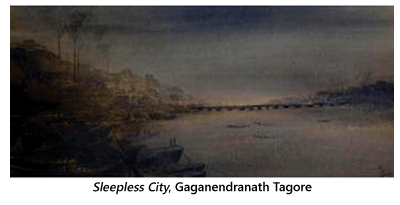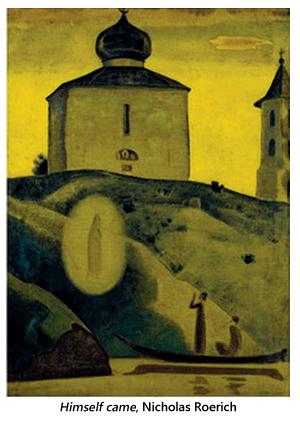- Prelude
- Editorial
- A time to Act
- Raja Ravi Varma: The painter who made the gods human
- Rabindranath as Painter
- Gaganendranath: Painter and Personality
- Abanindranath Tagore: a reappraisal
- Where Existentialism meets Exiledom
- Nandalal Bose
- Jamini Roy's Art in Retrospect
- Sailoz: The Inerasable Stamp
- Amrita Sher-Gil
- Calcutta's Best Kept Secret: The Marble Palace
- Art is Enigmatic
- A few tools to protect the French culture
- The exact discipline germinates the seemingly easiness
- Symbols of Monarchy, power and wealth the Turban Ornaments of the Nizams
- The Bell Telephone
- The Pride of India
- Tapas Konar Visualizing the mystic
- Theyyam
- Our Artists vs. their Artists
- Dragon boom or bubble?
- What Happened and What's Forthcoming
- Art Bengaluru
- Musings from Chennai
- Art Events Kolkata: May – June 2011
- Mumbai Art Sighting
- Previews
- In the News
ART news & views
Our Artists vs. their Artists
Volume: 3 Issue No: 18 Month: 7 Year: 2011
Market Monitor
by Art Bug
Before launching on a discussion of the market value of Indian heritage artists, let us first examine a very interesting fact. Out of the nine heritage artists, from Rabindranath Tagore, Nandalal Bose, Gaganendranath, Sailoz Mukherjee, Abanindranath Tagore, Jamini Roy, Amrita Sher-Gill, Raja Ravi Varma and Nicholas Roerich, it is Roerich who has, uptil now commanded the highest price in international auctions. The Russian mystic, writer and artist, who made India his home towards his last days has till now clocked US$ 3, 197, 960 for his oil on canvas titled Himself Came, which was sold at Southeby's London in November 2007.  The amount, converted to present day value, will be several notches higher. In fact, the credit of the second highest price achieved by an Indian heritage artist also goes to Roerich, for his Lao-Tze, tempera on canvas, which sold a year before Himself Came at Southeby's New York, at US$ 1,950,000.
The amount, converted to present day value, will be several notches higher. In fact, the credit of the second highest price achieved by an Indian heritage artist also goes to Roerich, for his Lao-Tze, tempera on canvas, which sold a year before Himself Came at Southeby's New York, at US$ 1,950,000.
The closest that an Indian origin heritage artist has come to this is Raja Ravi Varma, the father of calendar-art in India, the most prominent painter from the Tanjore school of art who imbibed the European technique of oil on canvas and realism through trial and error, because there was hardly anybody but himself to teach him the form, and finally earned himself a place apart from his original folk-form. However Ravi Varma's Vasantsena, again an oil on canvas, which was sold by Christie's New York in 2007, could fetch US$ 350,000, which falls way behind Roerich's lowest. Varma's Malayali Beauty, another oil on canvas, fetched US $ 110,000 in 2004, at Christie's, New York.
Before going along further, let us take a stock of the highest prices that the rest of our heritage artists have garnered at international auctions.
Nandalal Bose's Shiva drinking the World's Poison, a watercolour and line wash on paper was sold in 2006 by the Indian auction house Triveda Fine Art, New Delhi for the rupee equivalent of US$57, 564. That's his highest uptil now, followed by Bhairagi, a watercolour drawing that sold in 1999 at Sotheby's New York at US$ 27,500. Gaganendranath Tagore's, The Sleepless City, a watercolour drawing on paper, is till now his highest at US$ 55,000, followed by Illumination of the Shadow, another watercolour drawing at US$ 49,000, which were sold in 2010 and 2009 respectively. Sailoz Mukherjee has clocked the highest in the equivalent of US$ 20,038 for his oil-on-board Nizam-ud-din, which was sold by Osian's in New Delhi in 2005, followed by another oil-on-board, On the way to Nizamuddin, sold by Sotheby's New York in 2007 at US$9,000. Jamini Roy has clocked US$148,140 in 2007 for his tempera on canvas Musicians, Amrita Sher Gil US$256,440 for her oil on canvas The Red Hut, and Abanindranath Tagore US$48,000 for his watercolour drawing of Woman carrying a paper boat with two diyas. Then of course there is Rabindranath Tagore and his much debated auction at Southeby's last year and this year, which fetched US $382,720 for his watercolor and coloured ink on paper Untitled work (2010) and USD $ 280,000 for his gouache, coloured ink on paper titled Death Scene.
But then, if one compares the prices of Indian heritage artists vis-à-vis the international masters, they come nowhere near.  We are not talking of a Picasso or a Monet. We are not even mentioning Giacometti, since his highest outings have been in sculpture. We are talking Dali, and that too one of his lowest recorded prices, Spectre du soir sur la plage, an oil on canvas which sold for US$ 5,000,000. Even that is around $3,000,000 higher than Roerich's and several, several notches higher than a Ravi Varma or a Tagore. But why? Why is it that Indian heritage artists fail to command the astronomical figures in the international market that are the hallmarks of the international masters?
We are not talking of a Picasso or a Monet. We are not even mentioning Giacometti, since his highest outings have been in sculpture. We are talking Dali, and that too one of his lowest recorded prices, Spectre du soir sur la plage, an oil on canvas which sold for US$ 5,000,000. Even that is around $3,000,000 higher than Roerich's and several, several notches higher than a Ravi Varma or a Tagore. But why? Why is it that Indian heritage artists fail to command the astronomical figures in the international market that are the hallmarks of the international masters?
There are several schools of thought on this. But the most popular reason forwarded by experts is that of 'quality' 'quality' not necessarily in terms of aesthetics but in terms of 'technique'. One of the reasons why we have in each case mentioned the kind of painting that has been sold. If you will notice, it is oil on canvas, that is still the cynosure of international collectors far and wide. That is because oil on canvas has the highest preservative value and has been an essentially European technique, which necessarily could not have been accessed by the likes of Raja Ravi Varma, except on being self-taught, or was too costly for the likes of Nandalal Bose. While for the likes of Rabindranath, Gaganendranath and Abanindranath, who were fed on patriotic lines, indigenous methods combined with European techniques were what they went for by instinct. As a result, their 'preservative value' suffered. An ink or watercolour on paper is no comparison in terms of lasting value, when put beside canvas and oil. And that determines a whole lot of the values fetched at international auctions. A close study of highest prices achieved by Indian heritage artists like Raja Ravi Varma or Nicholas Roerich will show that there too oil on canvas rules.
According to another school of experts, there is a reason to be proud about. Despite being low on 'quality',  Indian heritage artists have continuously outperformed their highest estimates. For example, Nandalal Bose's Bhairagi was estimated between US$ 6,000 and 9,000. Its hammer price went upto US$ 27,500, way above its highest estimate. Sailoz Mukerjee's On the Way to Nizamuddin was estimated at US$ 3,000 and 5,000. It finally sold for US$ 9,000.
Indian heritage artists have continuously outperformed their highest estimates. For example, Nandalal Bose's Bhairagi was estimated between US$ 6,000 and 9,000. Its hammer price went upto US$ 27,500, way above its highest estimate. Sailoz Mukerjee's On the Way to Nizamuddin was estimated at US$ 3,000 and 5,000. It finally sold for US$ 9,000.
Abanindranath's Woman carrying a paper boat with two diyas was estimated at US$ 15,000 and 20,000. It went for more than double the highest estimate at US$ 48,000. Ironically, it was Rabindranath, who failed to achieve his highest price, that too in the 2011 auction, where he was estimated at US$ 300,000 and 500,000 but achieved US$ 280,000. However, this estimate was influenced by his performance in 2010, when in UK he outperformed his highest estimate of GBP 40,000, when he fetched GBP 260,000 for his Untitled portrait of a woman.
Another reason forwarded by experts is the Antiquity and Art Treasures Law, for which a lot of the works of these artists are still stashed away at godowns of government owned galleries. They have not seen the light of the day, far to speak of seeing the light of international auctions. And ironically, they are very badly preserved, yet are some of the best works by our masters.
Hence there is no reason to lose heart dear Indian. It's just a technical reason where our heritage artists have lagged behind. In terms of aesthetics they are in line with the Picassos and Monets of the world, continuously outperforming their international estimates.